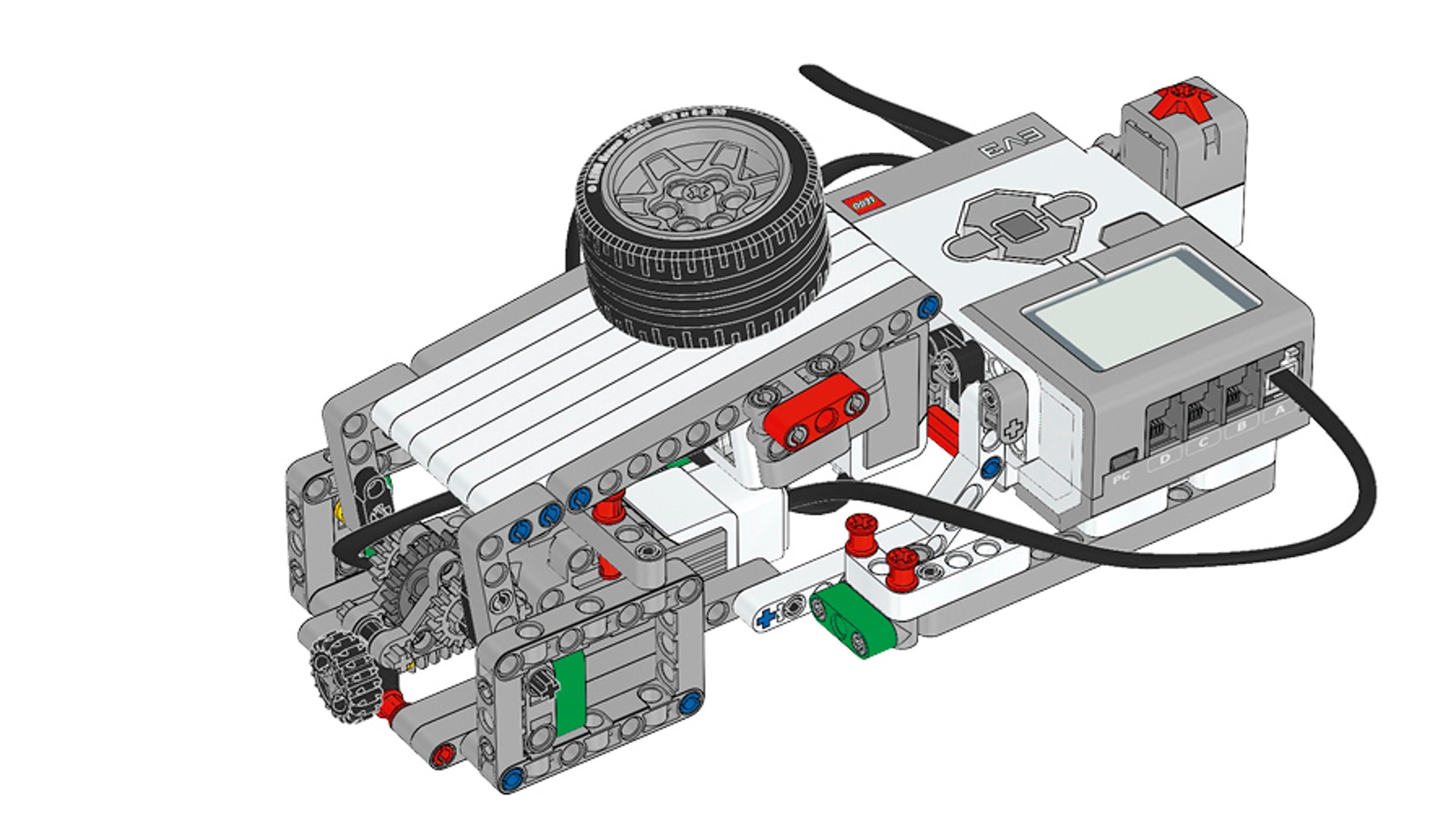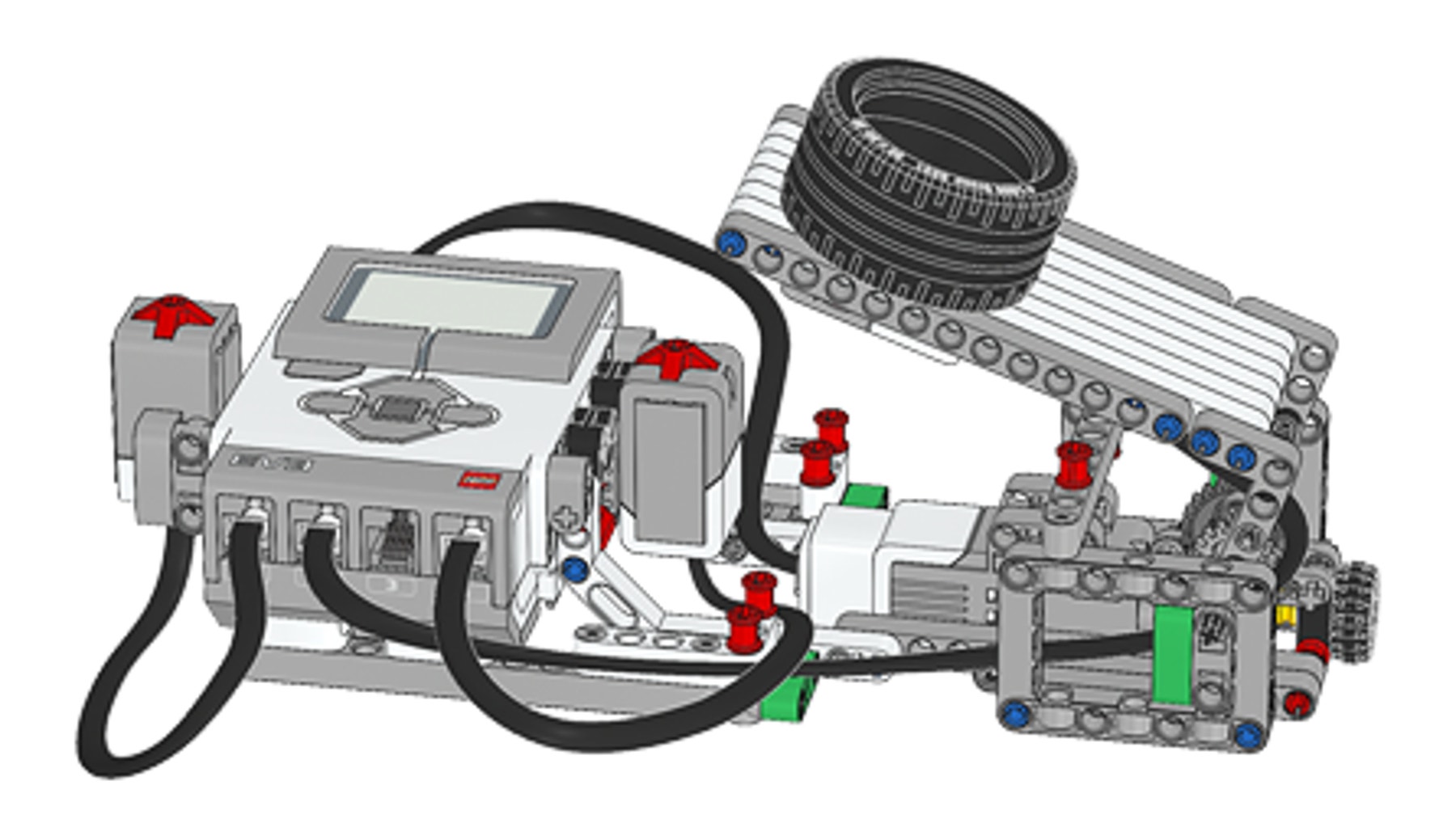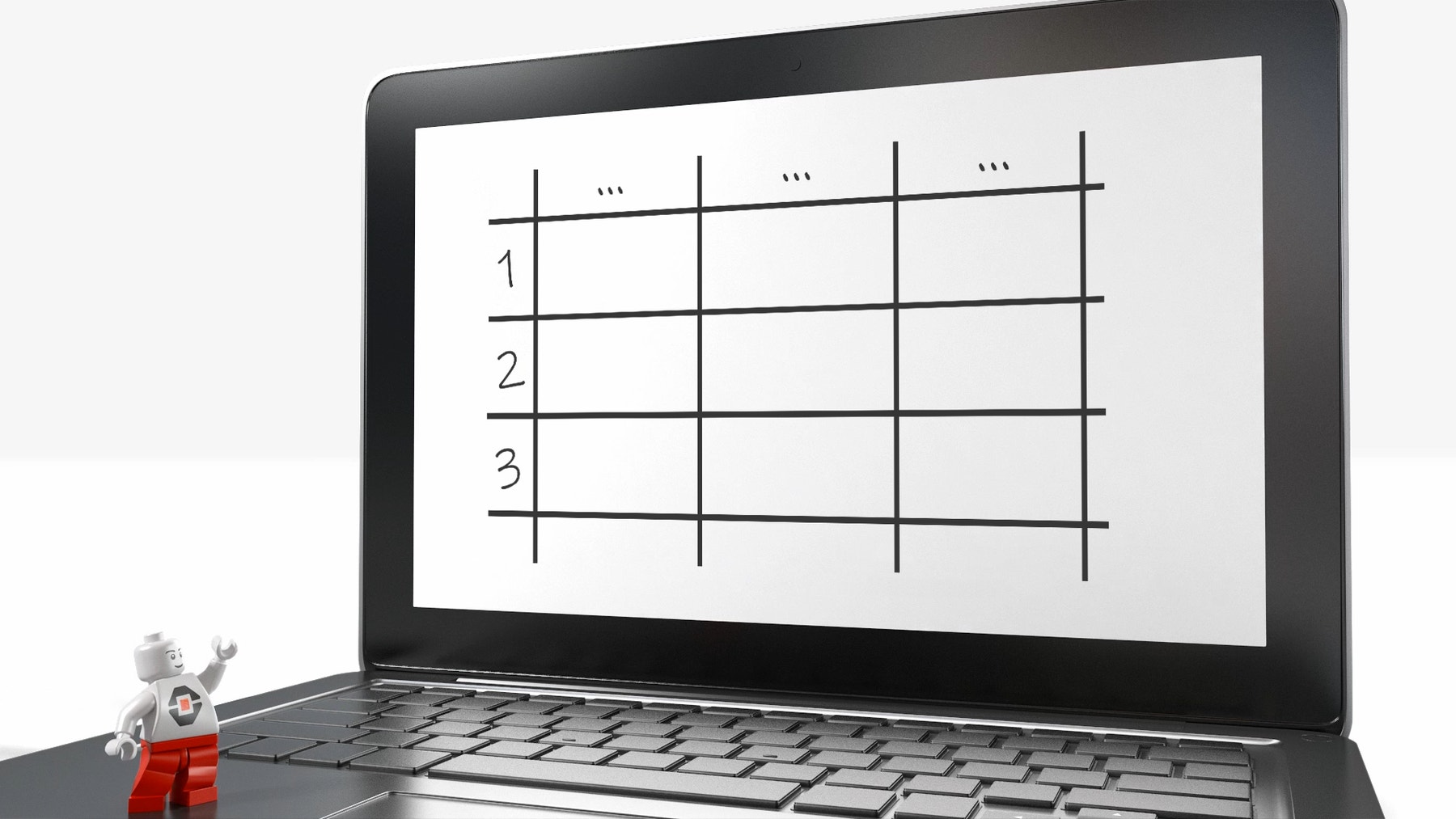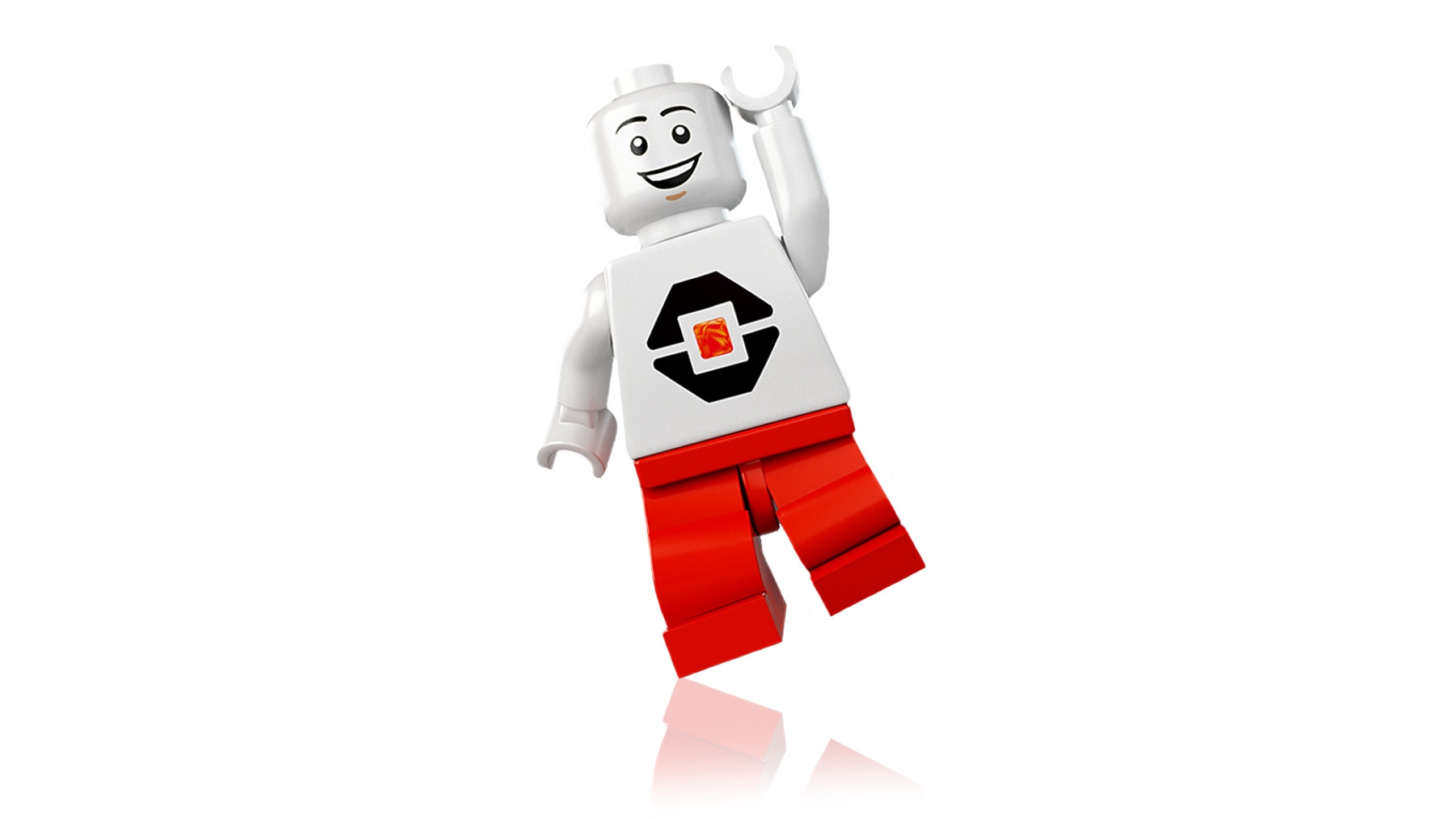Sliding Down a Slope
When is friction useful?

Friction forces can be deliberately harnessed, for example in the design of shoe soles to prevent falls on slippery surfaces. The idea behind ice skates is to keep friction as low as possible so that they will glide over the ice.
In which situations is friction desirable? When is it not desirable?
Build this *Tilting Platform*.

It will help you to determine the coefficient of friction for different objects.
Do a test run.


Place the model on a solid and level surface. If the surface isn’t level, the angles and the associated coefficient of friction will be incorrect. Run the program and wait until the Touch Sensor is shown on the Display. Place the object to be studied in the centre of the ramp, at the end. Press the Touch Sensor on Port 1 to start the test run. Press it again as soon as the object has started to slide
Does the ramp slowly rise during the test run? Are the angle and the coefficient of friction displayed?
Using the Gyro Sensor
The Gyro Sensor must be completely motionless while it’s being plugged into the EV3 Brick and during the start-up of the EV3 Brick. If the Gyro Sensor’s angle readings change while the ramp is still, unplug the sensor and plug it back in.
Record your results.

Record the experiment number, angle and coefficient of friction in a testing table. Make sure you leave space for recording other observations.
Perform the experiment using the tyre, and then repeat the experiment for each of the other test objects.
Running the Experiment
Keep the following tips in mind as you run your experiment:
- The angle of the ramp, as well as the coefficient of friction, will be shown on the Display.
- Perform the experiment at least three times with each test object and use the average value to ensure the most reliable results.
Summarise your results.

Use the average coefficient of friction for each of the objects and organise them according to their structural properties (e.g. shape, composition, surface characteristics).
Can you explain why some of the objects begin to slip at small angles and others at large angles? Do the structural properties of your objects help to explain the results of your experiments?
How did you do?

What did you do well? Is there anything that you could have done better?
Brilliant! Now you know how structural properties relate to friction. Let’s move on to the next lesson!